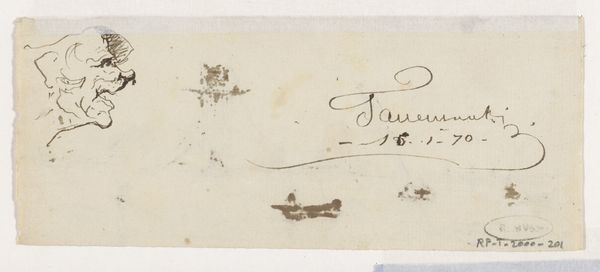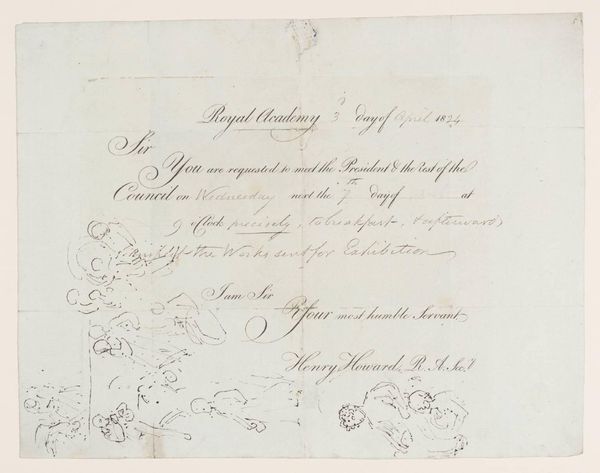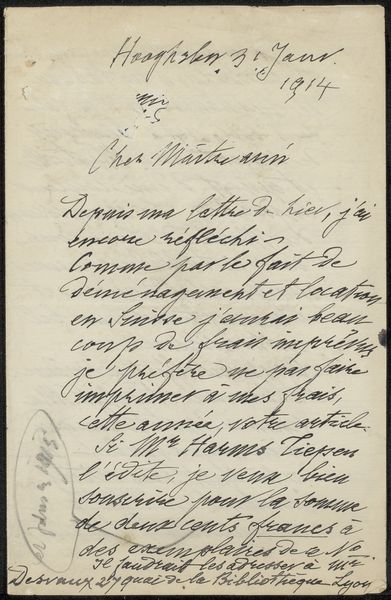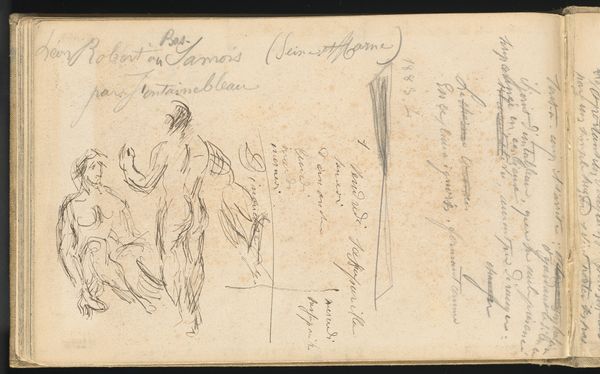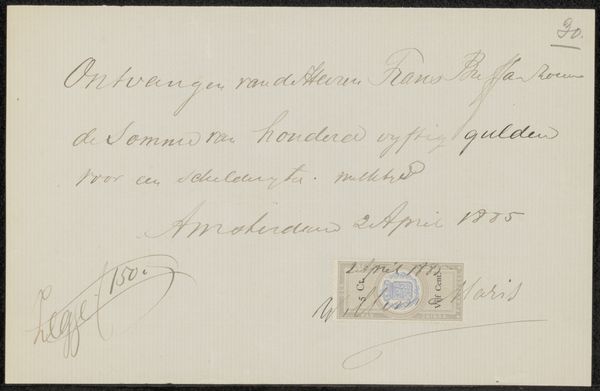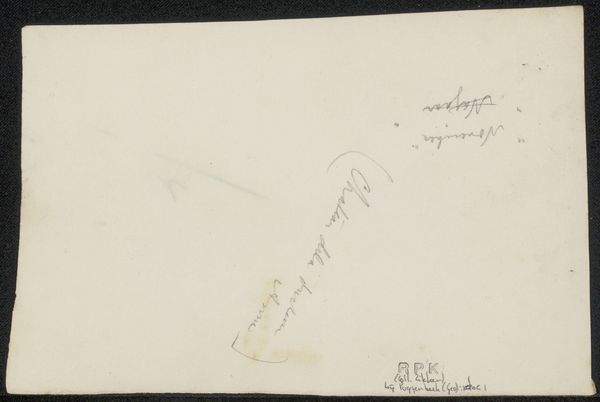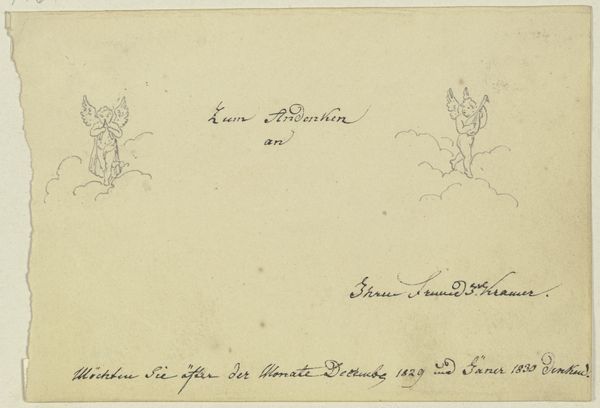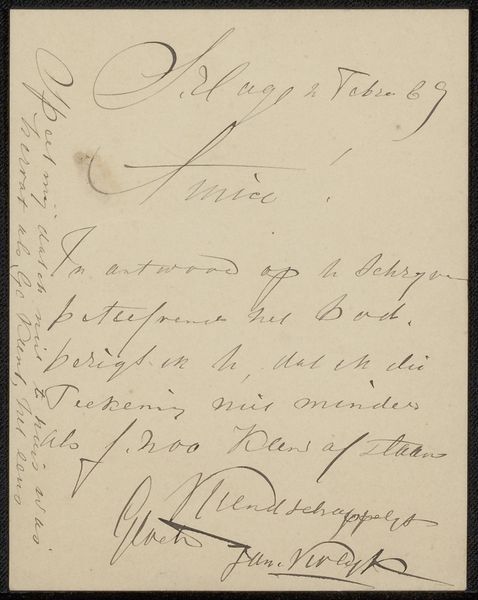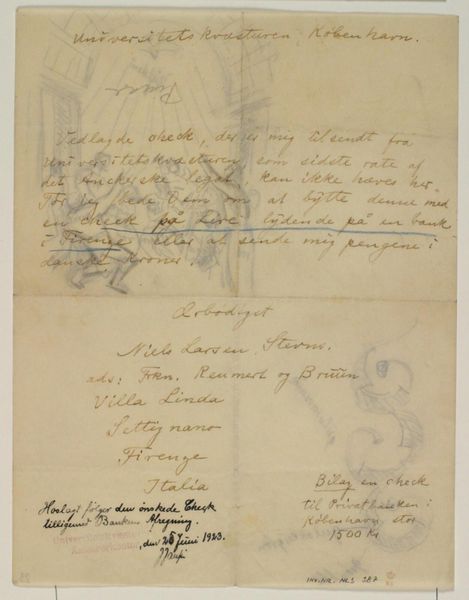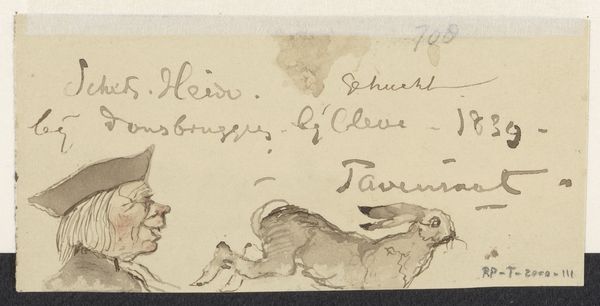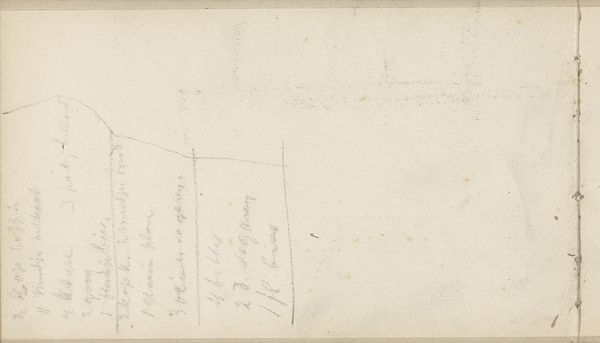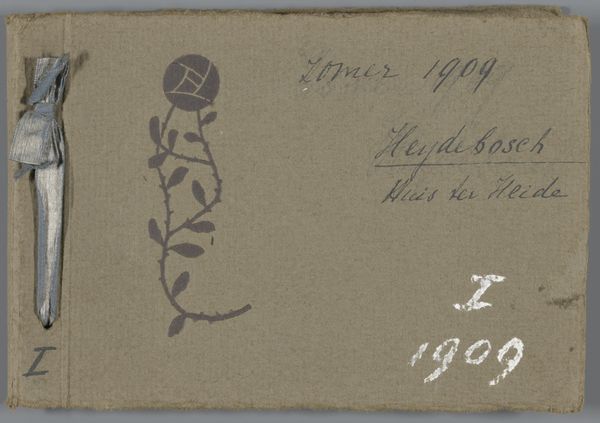
Dimensions: height 89 mm, width 155 mm
Copyright: Rijks Museum: Open Domain
Curator: Here we have a piece titled "Kop met baard" – that’s "Head with Beard" – attributed to Johannes Tavenraat, made sometime between 1840 and 1880. It’s rendered with pencil and ink on paper. My first thought: this is ephemeral. Fragile. Editor: I agree; the fading inks and thin paper signal time. But beyond the literal aging of the materials, notice the beard itself! The long, almost flowing lines evoke wisdom and age, the face itself an icon of experience etched into its very form. The hat adds a formal element; he’s someone presenting himself in a particular way. Curator: Or, someone constructing an image of self, considering Tavenraat made quite a few self-portraits. The swift, almost scribbled strokes are interesting; the whole drawing speaks of process. He was working quickly here, probably in a sketch format. Think of the kind of pencil, the specific batch of ink. These contribute so much to the ultimate visual and tactile effect. Editor: The script above it! Consider how text and image are unified. Not just the face as representation, but the name, almost like an incantation—it’s branding himself. We can consider what these hand-lettered styles reveal about the period's artistic self-awareness. And consider the deeper semiotics: what does "Tavenraat" want his face, coupled with his name, to mean? Curator: I would argue it all hints to the artistic culture and practices available to Tavenraat; what kinds of paper, inks, pencils he had, where and how he made the self-portrait. Were these materials mass-produced, readily accessible? All these little things can teach us so much about artistic labor during this era. Editor: Perhaps, yet seeing his name integrated—along with his portrait—compels me to view him forging identity within the continuum of art history; a man both claiming lineage and striving to define his unique imprint upon its record. Curator: And thinking about art practice in relation to societal factors opens to my mind wider view: perhaps these self portraits was not simply made for fame, rather something like, self-documenting or accounting and self reflection? I believe that both process and interpretation are required to bring value to artwork appreciation, such as the self-portrait from Tavenraat, both semiotics and means of artistic labor matter! Editor: Indeed. Appreciating how layered art can be—that it resonates through time, altering meanings but retaining core essences.
Comments
No comments
Be the first to comment and join the conversation on the ultimate creative platform.
